Comments / Questions (81)
![]() Zuzanna wrote:
Zuzanna wrote:
Hello Drops! Am I crazy or if casting on stitches for the sleeve at the end of a row on the RS we end up with the left sleeve, not the right one?
24.11.2025 - 22:08DROPS Design answered:
Hi Zuzanna, You are working the right front piece and right sleeve in one section. At the end of the row from the right side, you have reached the sleeve-side of the right front piece and then cast on stitches for the right sleeve. Regards, Drops Team.
25.11.2025 - 06:53
![]() Agga wrote:
Agga wrote:
Hej...til slut ved højre forstykke og ærme " strik p over m på pind" . Er det slut masker eller?...
18.11.2025 - 11:20DROPS Design answered:
Hej Agga, jeg forstår ikke dit spørgsmål? Du strikker 1 pind mere og sætter nu maskerne på tråden :)
28.11.2025 - 08:02
![]() Felicity Wilson wrote:
Felicity Wilson wrote:
This is my second attempt to knit this coatigan. Once again, I am stuck at beginning the back piece. Does it include sleeves Extending the front? 61 stitches just does not seem enough. The diagram doesn’t help either. Midway marker also confuses. I’ve been knitting for over 65 years and this is really frustrating. Maybe I need directions more simply written.
15.10.2025 - 07:15DROPS Design answered:
Hi Felicity, now you work the back piece top-down, starting with second half of sleeves. 61 sts (2 sleeves and neck) is enough considering the sample (7sts/10 cm) and the length of the sleeves. Happy knitting!
30.10.2025 - 11:25
![]() Peggy Hall wrote:
Peggy Hall wrote:
Pattern: Hellebore. I need a better reference for sizes. Like, "medium", in U. S. A. words, size 10-12? Bust measurements 34"-36". Otherwise, I'm totally lost.
24.01.2024 - 06:46
![]() Benedetta wrote:
Benedetta wrote:
Buongiorno, quando scrivete "Cucire le estremità del collo insieme, bordo contro bordo, al centro, sul dietro" intendete il lato più lungo o quello corto delle estremità? Grazie Cordiali saluti
10.10.2022 - 14:36DROPS Design answered:
Buonasera Benedetta, deve cucire i 2 lati corti e poi cucire il tutto alla scollatura. Buon lavoro!
15.11.2022 - 22:22
![]() Enza wrote:
Enza wrote:
Ma si può lavorare con i ferri lineari ?
31.10.2021 - 15:07DROPS Design answered:
Buonasera Enza, questo modello è un cardigan, quindi può essere lavorato con i ferri dritti. Buon lavoro!
01.11.2021 - 23:07
![]() Anna wrote:
Anna wrote:
Hello, I'd like to ask if the diagram is fully describing the pieces? I am a little confused how the separate pieces should look like and how to connect them together. 1. Is the diagram showing right front part and back sewed together? 2. Where would the collar go? 3. What does the striked-through line mean? 4. Would it be possible to upload sweater picture from the back? Maybe it would give some insight into understanding the connection of the pieces. Thank you in advance for your help!
06.01.2021 - 17:29DROPS Design answered:
Witaj, za przerywaną linią jest rękaw. Każdy przód wykonujesz od dołu do góry, nabierając o. na rękaw (w 1 części). Tył przerabiasz od góry do dołu biorąc na druty skrajne o. rękawów z drutów pomocniczych i nabierając między nimi o. na dekolt, powstanie tylna część rękawów+tył. Następnie zamykasz o. po 2 stronach i wykonujesz sam tył. O. na drucie pomocniczym od strony dekoltu przerabiasz rzędami skróconymi wg opisu (2 symetryczne części). Zszywasz obie części kołnierza na środku tyłu (rzędy gdzie były zamknięte oczka) i wszywasz kołnierz wzdłuż dekoltu tyłu. Zszywamy spód rękawów i boki. Pozdrawiamy!
06.01.2021 - 21:44
![]() Anna wrote:
Anna wrote:
Hello! I need help. With the 15mm knitting needles my swatch is very long and thin. Even if I stretch it, it is longer than expected. 1. Should we really use such big knitting needles? Perhaps my technique is not all right but I am not sure what to change. Would it work if I change to 12mm knitting needles? 2. Should I be stretching the sample to get the expected size? 3. To get felted size S which size should I make? Any help will be appreciated - thank you!
29.11.2020 - 17:53DROPS Design answered:
Dear Anna, in this pattern width would be more important than height that you can adjust only by measuring - this means you should have here 7 sts with 1 strand Andes + 1 strand Fabel in garter stitch = 10 cm in width. Read more about tension here. We are unfortunately not able to adjust every pattern to every single request, this jacket is not supposed to be felted - for any individual assistance you are welcome to contact your yarn store or any knitting forum. Thanks for your comprehension. Happy knitting!
30.11.2020 - 09:25
![]() Joëlle wrote:
Joëlle wrote:
Bonjour, j'ai tricoté ce modèle qui m'a tapé dans l'oeil pour ces couleurs ,le point,et le moelleux de cette laine. Très vite fait et très facile. Juste un p'tit conseil : rajouter qques mailles de chaque côté au niveau des manches afin qu'elles soient aussi longues que sur le modèle. Juste un peu lâche j'aurai dû prendre une taille d'aiguilles inférieures ou tricoter plus serré cela aurait été mieux car il a tendance à se détendre et s'allonger avec le poids. Merci
25.09.2020 - 23:32
![]() Doris Böttcher wrote:
Doris Böttcher wrote:
Ich würde gerne die Jacke Hellebore -mit Andes gestrickt, mit der Wolle Air stricken aber ohne ein zweitgarn. wie rechne ich dies um?
23.09.2020 - 11:23DROPS Design answered:
Liebe Frau Böttcher, gerne können Sie 1 Faden DROPS Andes durch 2 Fäden DROPS Air ersetzen, aber DROPS Fabel sollten Sie immer dazu stricken = 1 Faden E oder 2 Fäden C + 1 Faden A (= Fabel oder irgendeine andere Wolle Garngruppe A) - hier lesen Sie mehr über Garnalternativen. Viel Spaß beim stricken!
23.09.2020 - 14:18
Hellebore#helleborecardigan |
|
|
|
|
Knitted DROPS jacket in seed st in ‘‘Andes’‘ and ‘‘Fabel’‘. Size: S - XXXL.
DROPS 151-30 |
|
|
GARTER ST (back and forth on needle): K all rows. 1 ridge = K2 rows. SEED ST: Row 1: * K 1, P 1 *, repeat from *-*. Row 2: K over P and P over K. Repeat 2nd row. ---------------------------------------------------------- RIGHT FRONT PIECE + SLEEVE: Worked back and forth on a circular needle to make room for all the sts with one strand of each yarn. Cast on 33-34-36-37-39-41 sts on circular needle size 15 mm / US 19 with 1 strand Andes and 1 strand Fabel. K 2 rows. Then work Seed st over all sts - see explanation above. When piece measures 48-49-50-51-52-53 cm / 19"-19¼"-19¾"-20"-20½"-21", cast on 10-10-9-8-7-6 new sts at the end of next row from RS = 43-44-45-45-46-47 sts. Insert 1 marker - NOW MEASURE PIECE FROM HERE! When piece measures approx. 22-23-24-25-26-27 cm / 8¾"-9"-9½"-9¾"-10¼"-10⅝" from marker (make sure that next row is worked from RS), work the first 22 sts as before, then slip them on 1 stitch holder = 21-22-23-23-24-25 sts remain on needle, work the rest of row. Insert another marker (= mid on top of shoulder) – NOW MEASURE PIECE FROM HERE! Work 1 row over sts on needle. Slip sts on 1 stitch holder and put piece aside. LEFT FRONT PIECE + SLEEVE: Work as right but reversed, then continue with back piece without slipping sts on 1 stitch holder. BACK PIECE: Continue with seed st on next row as follows from RS: Work sts from left front piece + sleeve, cast on 9-9-9-11-11-11 new sts (= back of neck) and work right front piece + sleeve on to circular needle = 51-53-55-57-59-61 sts. Continue back and forth until piece measures 22-23-24-25-26-27 cm / 8¾"-9"-9½"-9¾"-10¼"-10⅝" from marker mid on top of shoulder. On next row bind off the first and last 10-10-9-8-7-6 sts, cut the yarn. Work over the remaining 31-33-37-41-45-49 sts. When piece measures approx. 67-69-71-73-75-77 cm / 26⅜"-27⅛"-28"-28¾"-29½"-30⅜", K 2 rows over all sts, then loosely bind off. COLLAR: Slip the 22 sts from stitch holder on right front piece back on needle. Cast on 1 new st towards the shoulder = 23 sts. K over all sts with short rows as follows: Row 1 and 2: Beg mid front - K 10, turn and K back. Row 3 and 4: K all sts, turn and K back. Repeat these 4 rows until collar measures approx. 7-7-7-8-8-8 cm / 2¾"-2¾"-2¾"-3⅛"-3⅛"-3⅛" on the inner edge towards the shoulder, bind off. Work the same way over sts from stitch holder on left front piece. Sew collar parts tog edge to edge mid back, and sew collar to neck inside edge st. POCKETS: Cast on 13 sts on circular needle size 15 mm / US 19 with 1 strand Andes and 1 strand Fabel. Work in stockinette st back and forth with 1 st in GARTER ST - see explanation above - in each side until piece measures approx. 18 cm / 7", loosely bind off from RS. ASSEMBLY: Sew sleeve and side seam in one, sew tog edge to edge in outer loop of edge st to avoid a chunky seam. Sew on pockets approx. 5 cm / 2" from bottom edge and 18 cm / 7" in from mid front, sew in outer loop of sts in garter st in each side. |
|
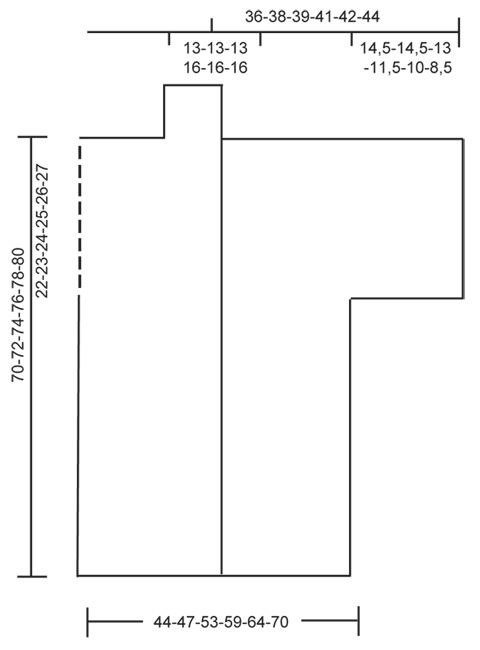 |
|
Have you finished this pattern?Tag your pictures with #dropspattern #helleborecardigan or submit them to the #dropsfan gallery. Do you need help with this pattern?You'll find 14 tutorial videos, a Comments/Questions area and more by visiting the pattern on garnstudio.com. © 1982-2026 DROPS Design A/S. We reserve all rights. This document, including all its sub-sections, has copyrights. Read more about what you can do with our patterns at the bottom of each pattern on our site. |













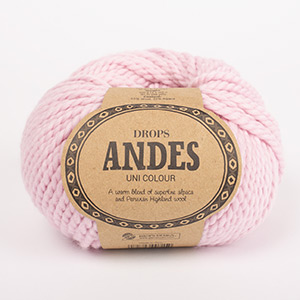
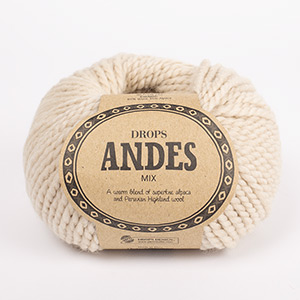



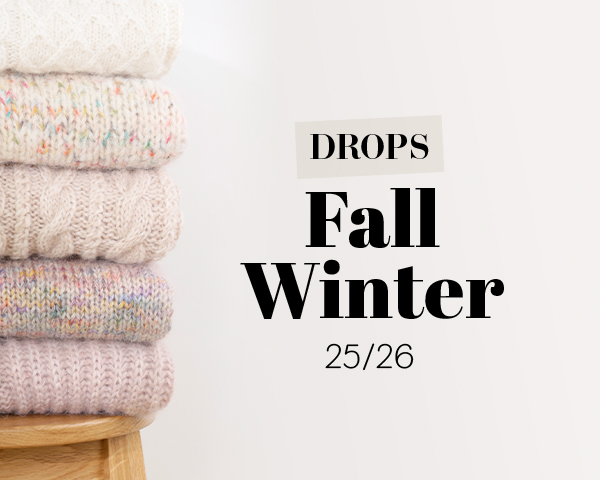




























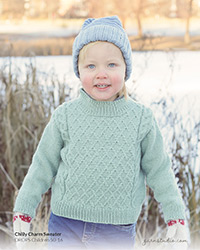
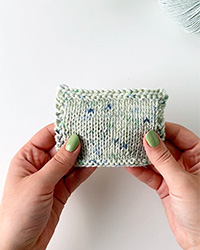

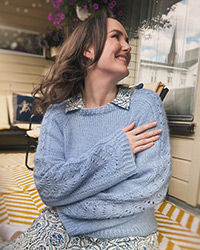

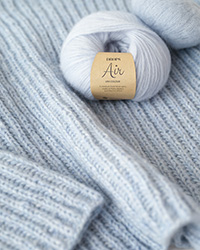
Post a comment to pattern DROPS 151-30
We would love to hear what you have to say about this pattern!
If you want to leave a question, please make sure you select the correct category in the form below, to speed up the answering process. Required fields are marked *.